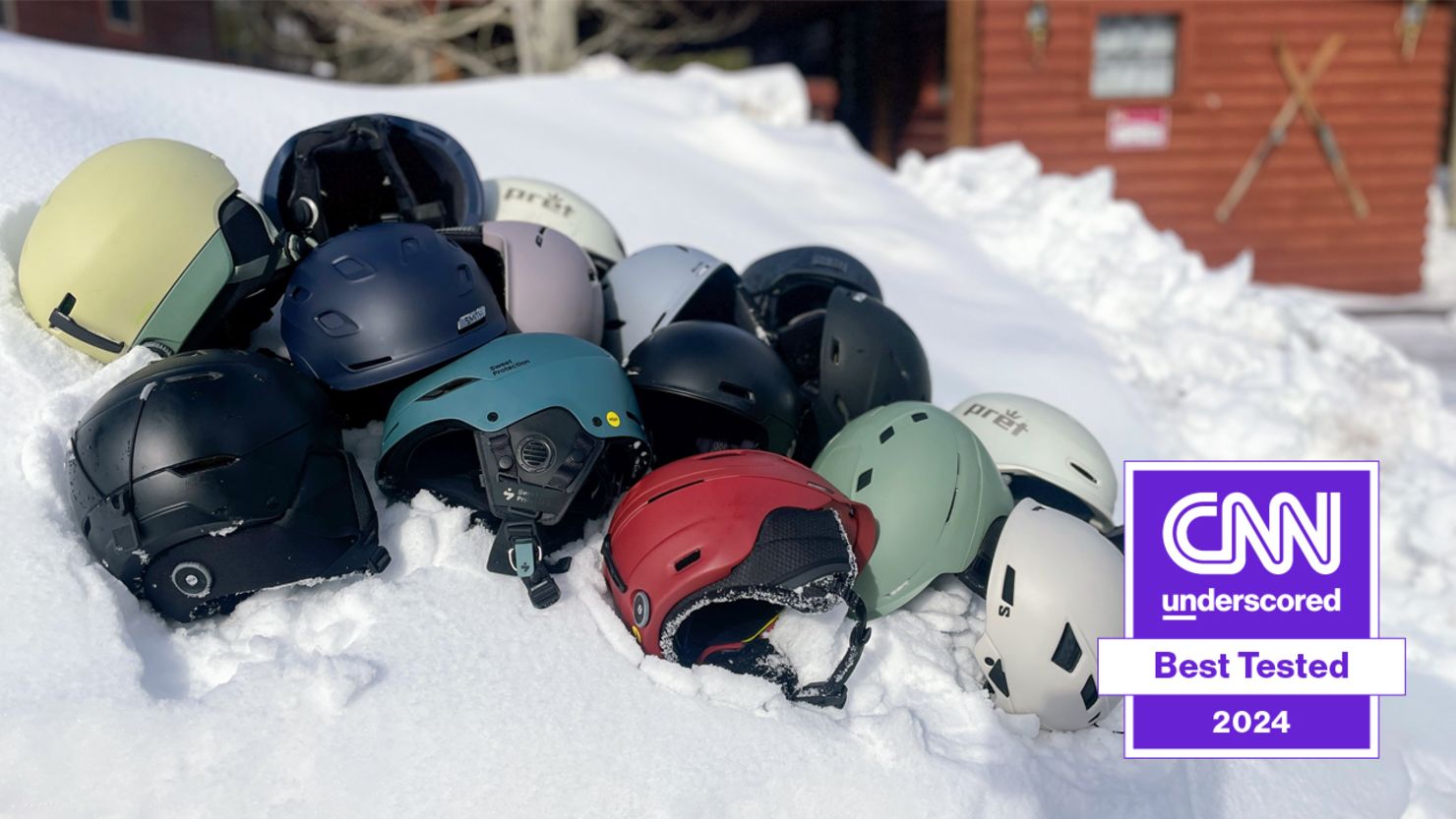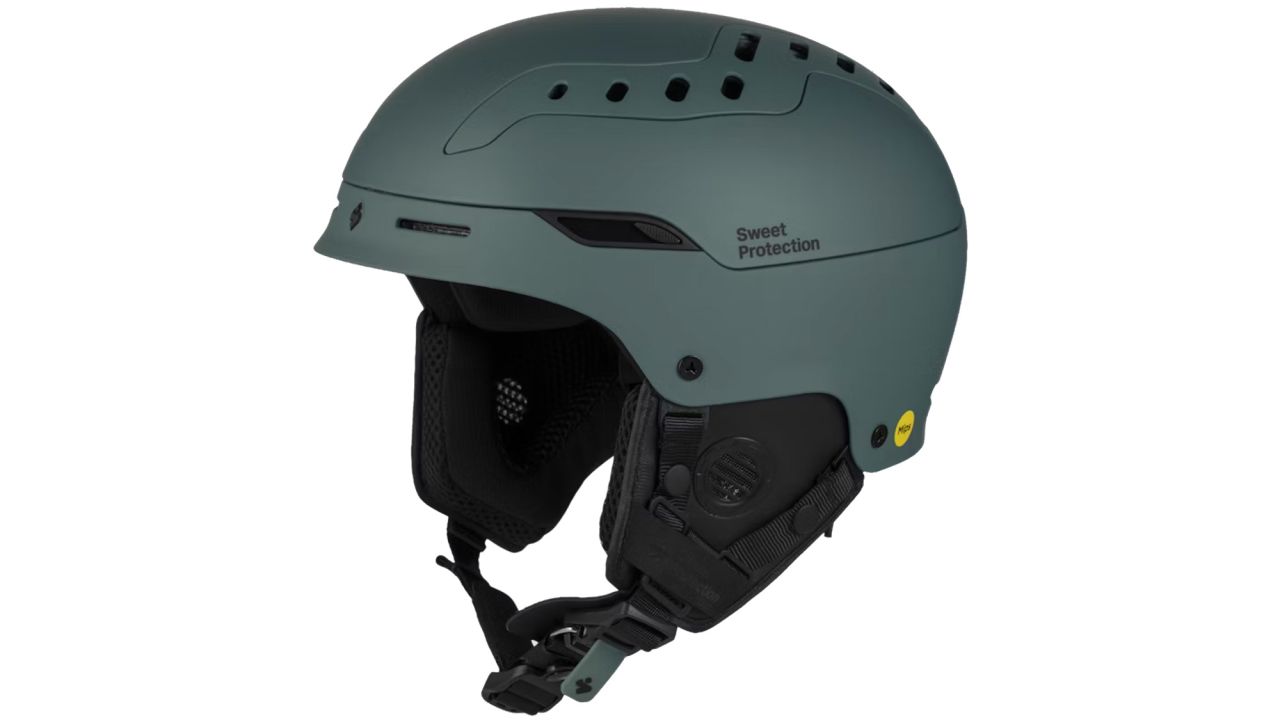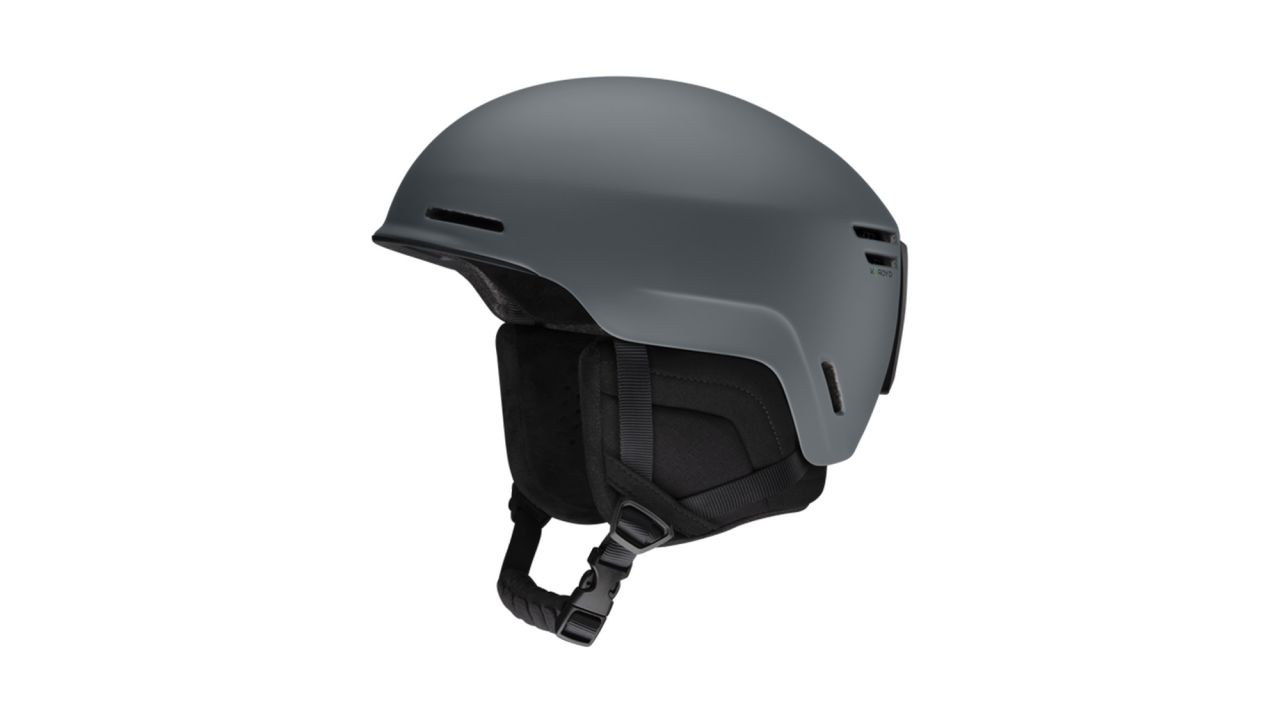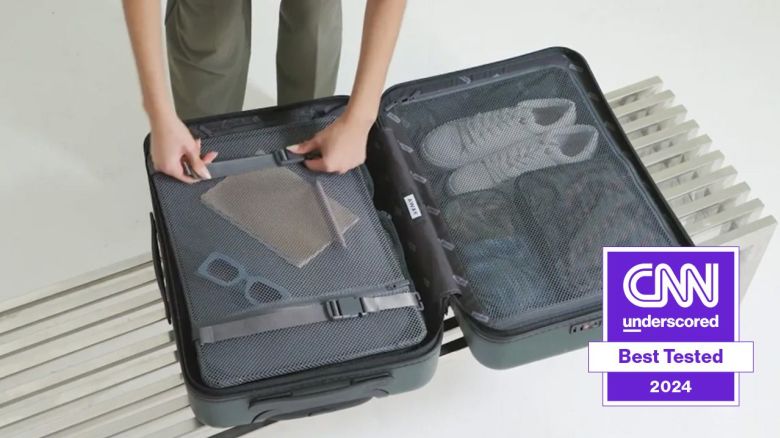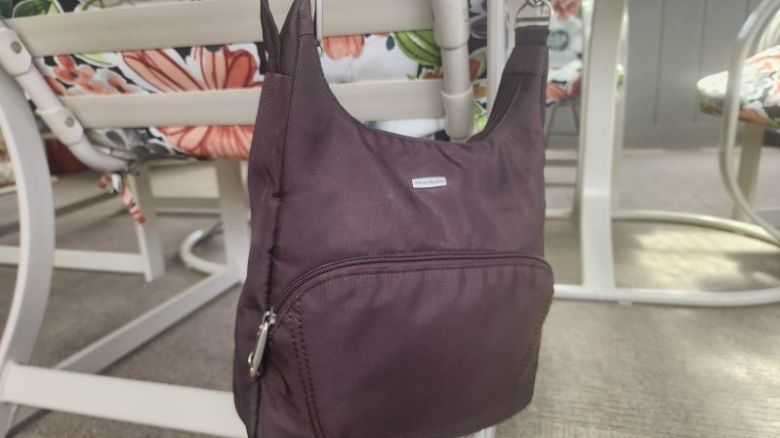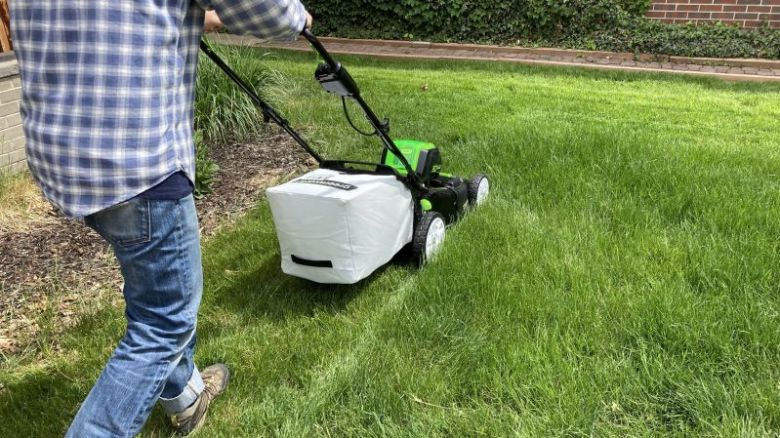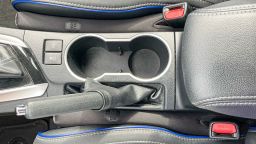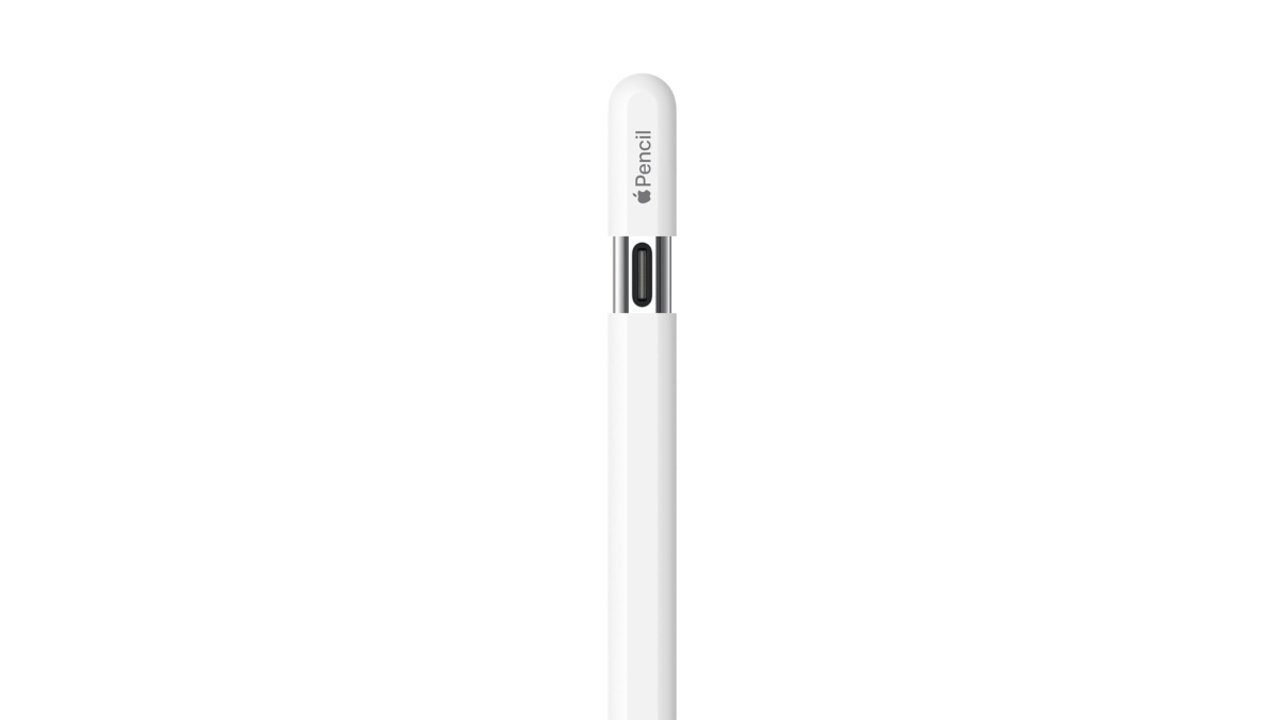The best snowboard helmets we tested
Best snowboard helmet: Sweet Protection Switcher MIPS
Best budget snowboard helmet: Smith Method
A snowboard helmet is one of the most important pieces of gear you can wear on the slopes. Whether you’re sticking to groomers or riding in the trees, a helmet will protect your head if you skid out on unsuspecting ice or collide with a person or tree. Beyond protection, it can also provide warmth, secure your goggles and allow for breathability when you are working hard. Any helmet is better than nothing, but choosing one that is ideal for you depends on a few factors.
To find the best snowboard helmet for this season, we looked at 16 different options to judge their safety technology, overall look and style, goggle compatibility, ventilation systems and other features, like how the chin straps buckle and if they tighten easily for a secure fit. We rode in windy weather and warm weather, wore the helmets with many different types of goggles and tested how well we could change the various features while wearing mittens. After many laps at the start of this winter season, two helmets stood out among the rest.
The Sweet Protection Switcher helmet, equipped with MIPS protective technology, has 22 adjustable vents strategically placed throughout the helmet, a magnetic chin clip for hassle-free use and ear pads that are some of the most comfortable we tested. The Switcher is a top choice and excelled in every test we conducted.
The Smith Method helmet is a budget-friendly option designed to keep you shielded from the elements in a stylish, simple design. It has eight fixed vents, plush ear pads and a secure fit. Priced at just $110, the Smith Method tested as our most affordable, yet still dependable, helmet.
Best snowboard helmet: Sweet Protection Switcher MIPS
$270 at Sweet Protection; $270 $189 at Backcountry; or $270 From $110 at Evo
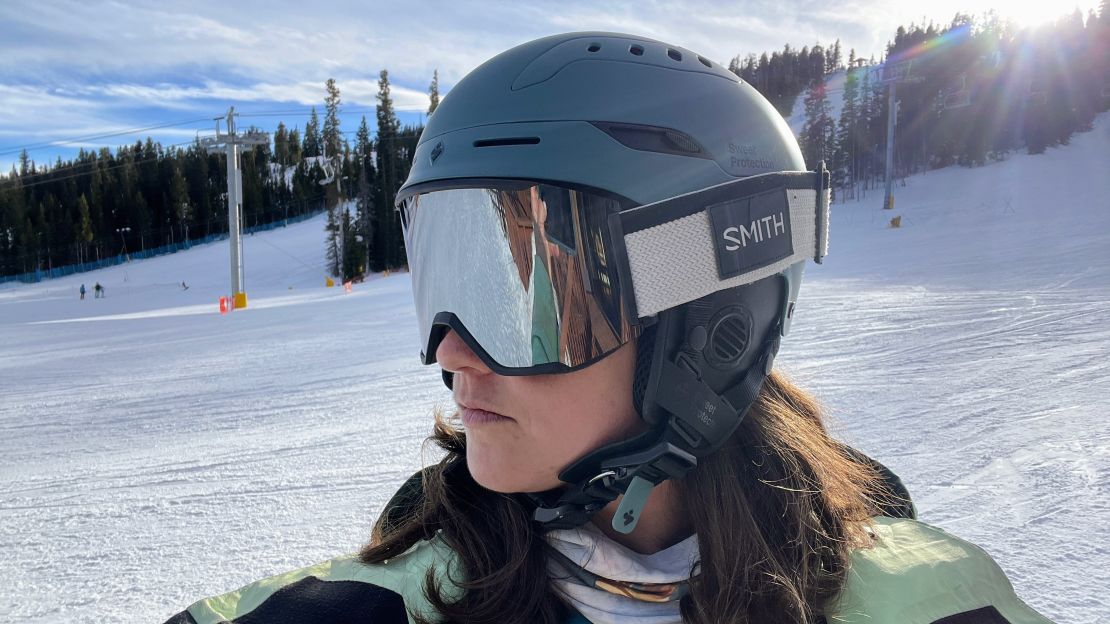
The Sweet Protection Switcher MIPS grabbed the top spot among all the helmets we tested, thanks to several features that stand unmatched when compared with the others we reviewed. Its one-handed chin strap system is remarkably user-friendly, the ventilation system is adjustable via a dial and the ear pads ensure unhindered hearing. Although it does come at a higher price point, the Switcher is well worth the investment.
Its ear pads are its standout feature, with a hollow middle and a thick perimeter of padding. Your ears fit right into the opening and allow for almost perfect hearing. Plus, the thick padding effectively blocks wind, making this helmet perfect for on-mountain testing days at the forever windy Eldora Mountain Resort. Beyond the ear pads, the helmet had an exceptionally nice feel overall and fit true to size. The interior liner is soft with just the right thickness around the ears and at the back of the head. There is also a thicker plush panel on the top for added comfort. When adjusting the dial fit system, the internal harness tightens in a very fluid fashion with no protruding plastic parts. This seamless adjustment was particularly noticeable when fitting the helmet for the first time; my head felt snug and well protected, without any undue pressure or tightness in specific areas.
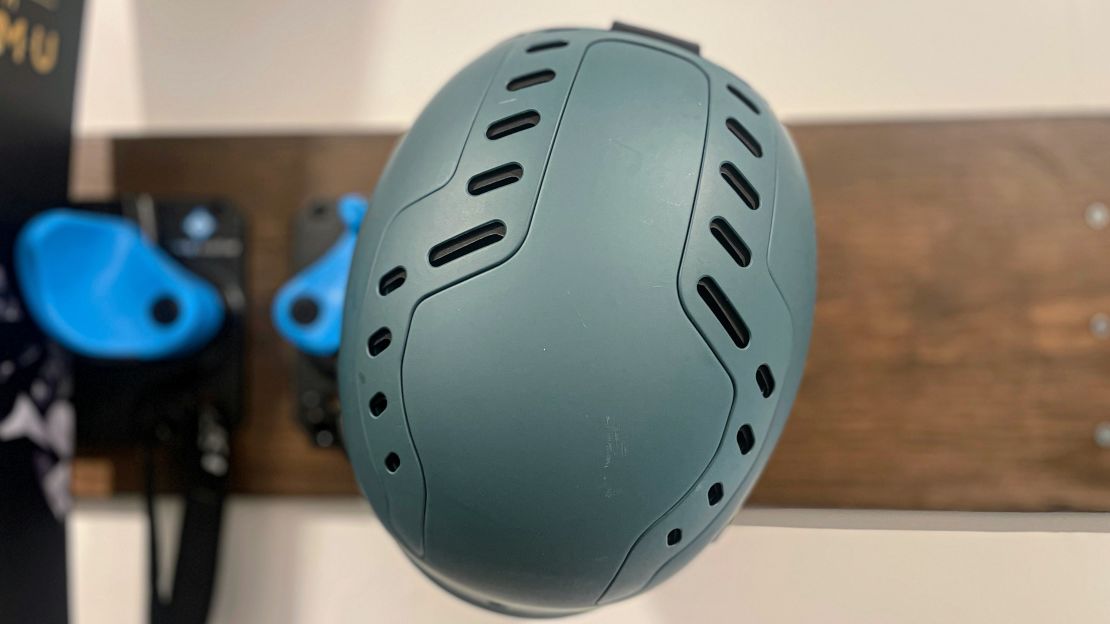
For ventilation, the Switcher boasts one of the most unique and effective systems. There are four smaller vents in the front, two of which help reduce goggle fog and two adjustable ones near the temples. This feature came in handy when I needed just a little bit of air to cool off, like when working up a sweat in the trees on a warm day at Breckenridge. I could easily open or close them while riding, as the small knob was smooth to use. There are an additional 20 adjustable vents on the top of the helmet that not only help with airflow but also add a neat aesthetic. Unlike on other helmets, these vents are adjustable via a dial rather than a sliding switch or knob. While the switch control on other helmets isn’t too difficult to use, we especially loved the dial. It’s easier to use, even with gloves on, and allows for more precise adjustability, which can help if you want to fine-tune your helmet’s temperature on the fly.
I’m quite picky about goggle retainer straps, but the one on this helmet is stretchy and large. It easily fits over the dial to secure it in place; no goggles fell off in the shake test. The pull tab is a little small but still easy to grab, as it is rubbery and grippy. For compatibility, I wore the helmet with the Smith Squad Mag goggles, Giro Article II goggles and Anon M4S goggles, all of which fit easily under the small brim and had no gap between the top of the goggles and the front of the helmet. In addition to goggle compatibility, the Switcher also has a magnetic buckle that was the easiest to use of all the ones we tested. The one on the Switcher has a large, grippy tab that is easy to hold on to and lets you clip and unclip with one hand in mere seconds.
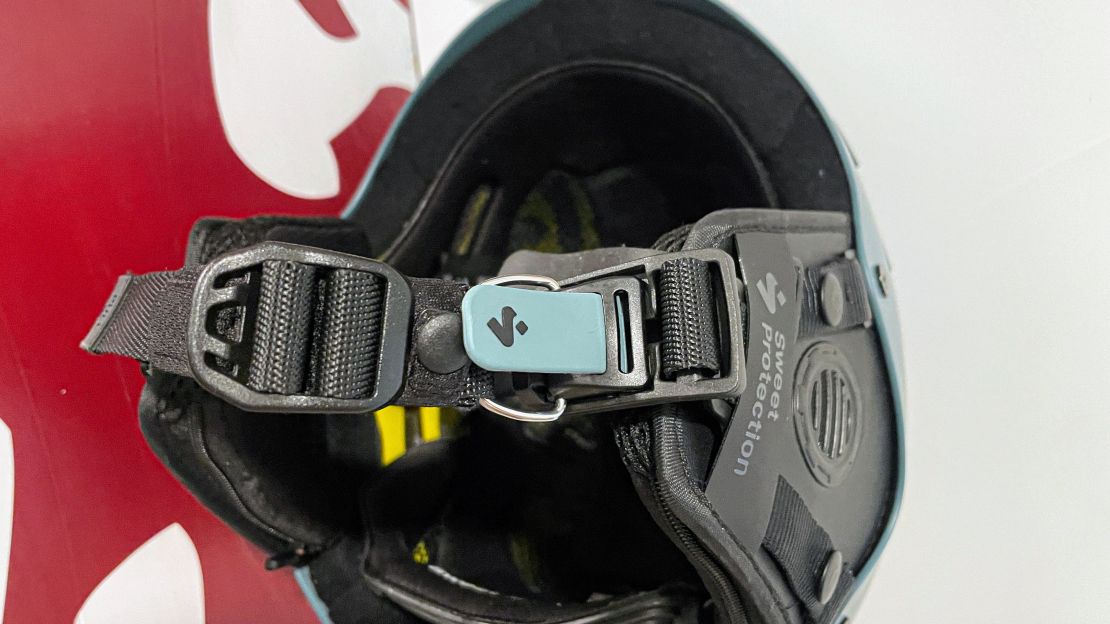
This helmet has a hard-shell and in-mold construction, which uses a few different technologies to help protect your head. MIPS, found in most of the other helmets we tested, helps reduce rotational forces that may occur during a bad fall or crash. To protect from impact, the Switcher also uses the brand’s in-house technology, which is a molded shock-absorbing EPS liner combined with Impact Shield inserts, which aim to distribute the impact from just one point to a larger area. Since new rotational protection technologies such as MIPS have no official governing body certifying them, we can’t say one is better than the other, but we did slightly favor helmets with these technologies over others, with small bonuses for multiple technologies (more on safety and how we scored below).
All those protection technologies come with an extra price and weight, though, as the Switcher MIPS helmet weighed in as our second-heaviest helmet at 600 grams. However, resort snowboarders don’t typically pay attention to weight that much, and the Switcher didn’t feel at all heavy, bulky or cumbersome during our testing.
If you want a helmet that’s comfortable and incredibly easy to use and adjust, choose the Sweet Protection Switcher. You’ll get all-day comfort and a great balance of warmth and breathability to ensure a hassle-free and enjoyable experience from first run to last.
Best budget snowboard helmet: Smith Method
$110 at Smith Optics and Amazon
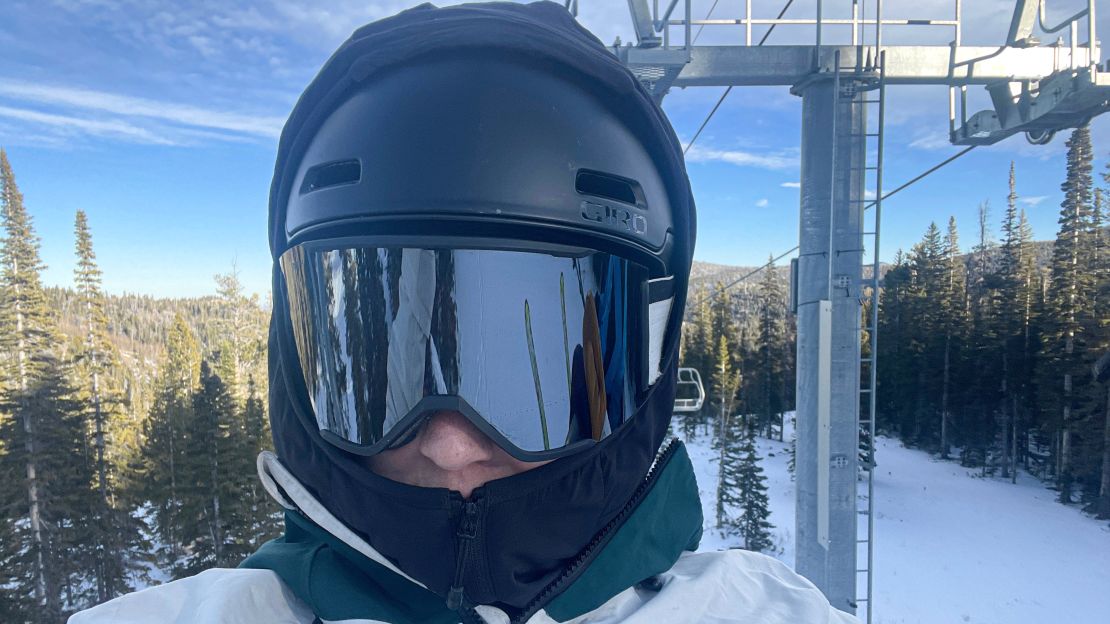
The Smith Method is the most affordable option we tested — just $110 — yet it still had a great fit and doesn’t skimp on top protective technology. All in all, it stands out as one of the best helmets you can buy at an affordable price point. Its minimalist design is complemented by top features that ensure both impact protection and comfort, with ample vents for ventilation. Throughout testing, it consistently delivered all-day comfort and easily secured the top choice for the best budget helmet.
Comfort was a big plus for the Method, and the plush ear pads were a big reason why. They’re audio compatible and kept my ears protected from chilly wind whether I was sitting on the chair or cruising down the mountain.
The Smith Method has eight total vents, but none of them are adjustable. This isn’t a huge deal, but on cold days of testing, I could feel the wind coming through the front two holes. Despite that, breathability fared similarly to other helmets tested, both budget and non-budget options. However, if you find your head gets too cold or too hot frequently, you may want to consider the Sweet Protection instead.
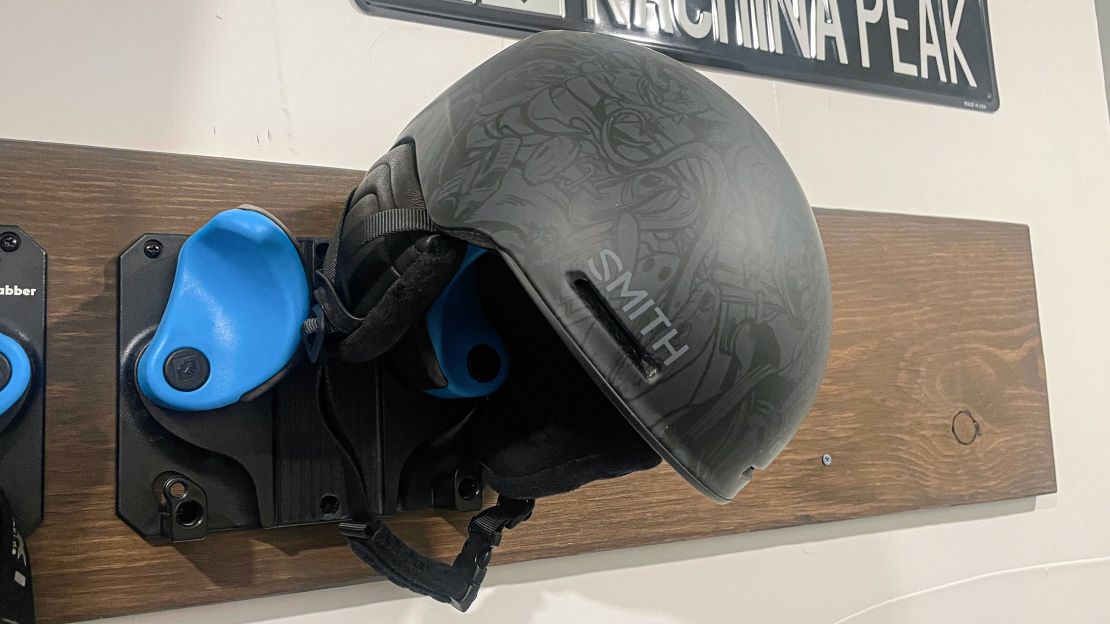
One downside of the Method is its fit. It uses a traditional clip for the chin strap and doesn’t have a dial fit system, which helps a bit with weight but makes it a little more cumbersome to use than our top pick. I prefer magnetic clips, as they make getting your helmet on and off much easier when wearing mittens. And since it doesn’t have a dial, it may not fit as tightly to your head as you’d like. While it did fit me right out of the box, you may want to try it on before you fully commit. Regardless, I found that it fit comfortably through the whole day without feeling too tight or too loose.
The goggle strap retainer is a hard clip, which we found to be the least secure in our testing. All the hard clips we tested failed our shake test, and the Method wasn’t any different. With two hard shakes, the goggles flew all the way off, so if you fall, they are probably coming off too. However, the helmet was compatible with all three goggles I wore, most likely due to the tiny, low-profile brim.
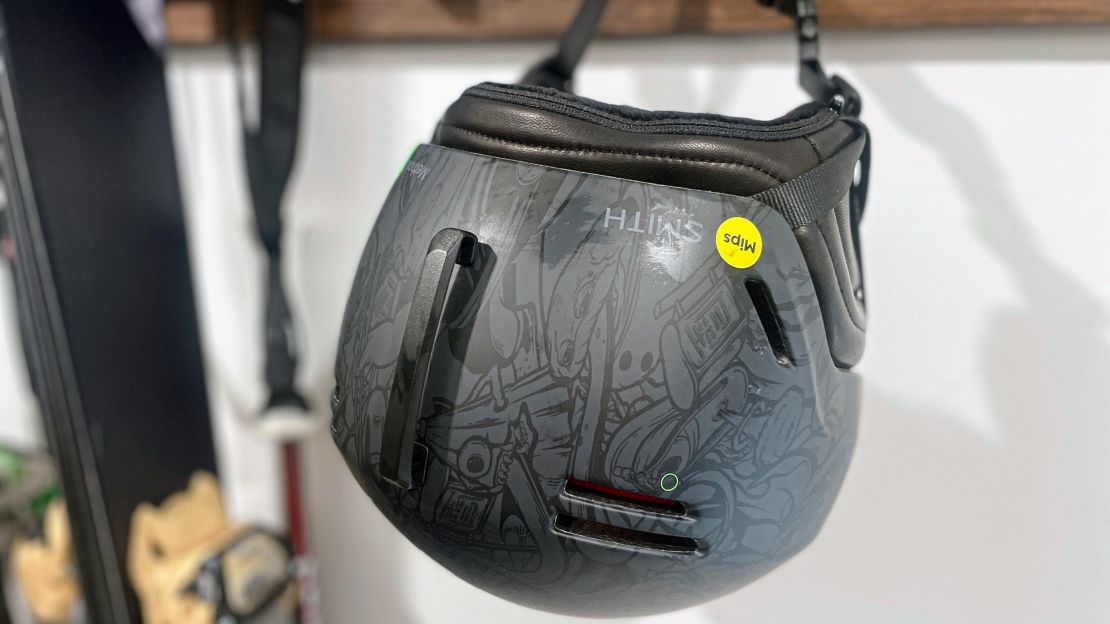
The Smith Method uses Zonal Koroyd as its main impact protection system. Koroyd’s main goal is to protect from impact and absorb shock, though it doesn’t protect from rotational forces (that’s where MIPS technology comes into play, which can be found in the Smith Method MIPS). Koroyd is lightweight — one of the lightest helmets we tested — at just 400 grams, so the Method doesn’t feel clunky in the least. Rather, it felt sleek and low profile throughout the entire day.
Even though some features are compromised to create a lighter and more affordable helmet, the Smith Method is still a great option if you don’t want to break the bank on your brain bucket. It has a sleek, no-frills design that’s paired with Koroyd impact protection technology to keep you safe even if you take a spill here and there. As an affordable option, the Smith Method is a straightforward choice to help keep you protected and safe, all while looking good.
How to choose a helmet
While any helmet is better than none, there are quite a few crucial factors to consider when purchasing one. Be sure to consider the technology and construction in the shell of the helmet that is used to specifically reduce both linear and rotational impacts. This technology can vary slightly between helmets and brands, as safety standards are a bit tricky. On most helmets, you’ll see standards such as the US-based standard of ASTM F2040-18, which is a common snow helmet certification; Europe also uses standards, such as EN-1077. Both can be considered safe standards, but they are also allowed to be self-verified by manufacturers and companies, so there doesn’t have to be third-party testing. Regardless, many brands do their own testing and stand behind these certifications.
Beyond these two certifications, several additional technologies have been developed by different brands to help with protection. These include MIPS, Koroyd and WaveCel. None of them can be proven better than another, and sometimes these technologies come with a big price bump. While we think they’re a good added benefit, you shouldn’t be paying a premium for these features alone.
Helmets also have a variety of features that make the overall use of the helmet much easier. This includes different styles of chin clips, the type of vents (adjustable versus nonadjustable) and fit adjustability. Some helmets even have built-in speakers or are speaker compatible.
Lastly, ensure that your helmet fits correctly. With the chin strap tightened and the dial fit system adjusted (if your helmet has one), you should be able to shake your head without the helmet moving. It should feel snug but not excessively tight, and there shouldn’t be any rocking back and forth or wobbling when you move your head. Also, there should be no gaps between your head and the helmet lining or between the top of your goggles and the front of the helmet.
How we tested
To test the helmets individually and compared with one another, we rode with the helmets on multiple days in various conditions but also on the same runs back-to-back. We rode in mostly cold and windy conditions, like at Eldora and Copper Mountain Ski Resort, but also in warmer conditions at Keystone Ski Resort and Breckenridge Resort. We looked at the safety technology used for each helmet, overall fit and comfort, goggle compatibility and goggle straps, ventilation and how easy it was to use the various features of the helmet with mittens on. Read on for more details of what we specifically looked for during our testing.
Safety technology
- For each helmet, we analyzed the integrated safety technology, though we did not test the helmets for force or collision. While we can’t say what technology is better than another, we did weigh helmets with additional protections such as MIPS, Koroyd and WaveCel slightly higher than ones without.
Performance
- Fit and comfort: We considered if our head felt any pressure points throughout the day, as well as how cushioned and soft the inside liner felt. We also rated if the ear pads hindered hearing by listening to a speaker at a consistent volume while wearing each helmet.
- Goggle compatibility: We tested goggle compatibility by wearing the helmets with three different goggles: the Smith Squad Mag goggles, the Giro Article II goggles and the Anon M4S goggles. With each goggle, we looked to see if there was a gap between the goggles and the brim of the helmet. We also tested how well they stayed on the helmet and secured in the goggle clip by putting the goggles on each helmet and then swinging the helmet in a large circle to see if the goggles detached.
- Ventilation: We counted how many vents each helmet had and factored in if they were adjustable or not. To see if wind was able to permeate the helmet through vents or other areas, we tested this during windy, on-mountain days and while sitting in front of a large fan.
- Ease of use: To test ease of use, we wore Baist mittens to crank the fit systems, clip and unclip the chin strap, adjust the vents and attach goggles.
Other helmets we tested
Smith Vantage MIPS
$270 $162 at Smith Optics
The Smith Vantage is a high-quality helmet when it comes to overall functionality. It incorporates almost all the essential features that make a top helmet, with an easy-to-secure BOA fit system, a warm and comfortable soft liner and a stretchy goggle strap that doesn’t come undone. This didn’t make the number-one cut because the chin strap is a regular clip rather than an easy-to-use magnetic one, and the ear pads were not as hearing-friendly compared to those on the Sweet Protection helmet. Despite lacking those two features, the Vantage is still a solid choice that is dependable and safe for snowboarding. Plus, it’s rocking a total of 21 vents, with 12 being adjustable.
Sweet Protection Igniter 2Vi MIPS
$250 at Sweet Protection
The main difference between this Sweet Protection helmet and the winning one is that this helmet doesn’t have the adjustable vents like on the Switcher. However, all other features — a Fidlock buckle, a dial for getting a specific fit, no pressure points and ear pads that are open on the inside — are the same. This helmet does have vents (10 in total), but only the small two at the front are adjustable. You’ll also find a different, thicker goggle strap in the Igniter versus the Switcher, but it was still easy to use and secured fully so that our goggles didn’t fall off in the shake test. If you don’t care as much about adjustable vents and want to save $20, this is a great pick.
Anon Windham WaveCel
$190 $114 at Burton
The Anon Windham is a good low-profile helmet that uses top protection technology with WaveCel by Anon and has quite a few good features, especially for under $200. The chin strap uses a magnetic buckle, so it’s easy to get on and off while wearing mittens, and the fit system uses a BOA dial that gives a snug and secure fit without any pressure points throughout the day. However, goggles fell off quickly in the shake test since the strap retainer is hard and opens at the bottom. There is one vent on the back, two smaller ones in the front and four on the top. Although these aren’t adjustable, the helmet still felt warm enough on really windy days at Eldora and our ears didn’t feel much wind at all, both when riding and during the at-home fan test.
Anon Logan WaveCel
$240 From $144 at Burton
The Anon Logan offers decent performance overall, but it was lacking in general comfort and missed the mark on a few features. The goggle retainer didn’t pass the shake test since the goggles fell off within two shakes. The dial fit system, while adjustable, left me with pressure points pretty quickly, which could be because I am between sizes. The small size just didn’t fit, while the medium required significant adjustments from the dial to get a secure fit. This left me with a squeezing feeling in weird spots near the base of my head. Regardless of this problem with sizing, the helmet features an easy-to-use magnetic chin clip and 10 vents, though they aren’t adjustable. The helmet also uses Anon’s WaveCel technology, which provides shock absorption and protection against harmful impacts or rotational forces.
Anon Prime
$230 From $138 at Burton
Despite the Anon Prime being slightly more affordable than our top pick and having a really impressive ventilation system, its inner lining construction and fit system compromised overall comfort for me. I felt pressure points once I adjusted the fit system to a snug fit, which left me with a slight headache by midday on the mountain. Additionally, the goggle retainer is a hard clip, which meant that goggles fell off within two shakes. The Anon Prime’s standout feature is definitely the ventilation system, which has 23 total vents, the most of any helmet we tested.
Giro Owen Spherical
$240 at Giro
The Giro Owen Spherical offered a comfortable fit and protection from winds throughout the day, but a few key features were lacking in usability. For example, the helmet does have eight vents located in the front and back (though none on the top), but to adjust them, you have to take off the helmet since the adjuster is inside. Personally, I’d rather not compromise looks for functionality; being able to change vents on the fly, without having to take off your helmet, is key to staying warm in less than ideal conditions. However, if you want a lightweight and low-profile helmet that has MIPS technology, this is your go-to.
Glade Boundary
$199 $139 at Shop Glade
The Glade Boundary helmet falls within a relatively affordable price range, though it is more expensive than the Glade Tenmile model (below). Even at a more affordable price, it doesn’t skimp on key features. The helmet had a compatible fit with both the Smith Squad Mag goggles and the Giro Article II goggles and had no issues of fogging up thanks to the two front vents on the brim. Glade uses MIPS safety technology on the Boundary and integrated a dual-ventilation system so you can get even more precision with the adjustable vents. At 436 grams, it is one of the lightest helmets we tested. However, it didn’t snag a top spot because the fit was a little funky and led to a slight pressure at the base of the neck.
Salomon MTN Lab
$250 at Salomon
If you tour often and work up a sweat, this lightweight helmet is made for you. The Salomon MTN Lab is one of the lightest helmets we tested at 400 grams, and it comes with both a backpack-specific helmet bag that can easily attach to your pack and a stretchy and secure goggle retainer that held our goggles in place during the shake test. For snowboarding, the helmet fit well with no pressure points but was not warm enough on very cold or very windy days. It overall has less coverage than the other helmets we tested, with smaller ear pads, a much thinner liner and a smaller dial fit system that seemed a bit flimsy. However, if you tour or mountaineer, you’ll very much appreciate all these lightweight elements and touring-specific features, such as the built-in headlamp retainer and standard safety requirements that are regulated for mountaineering and climbing helmets.
Anon Merak WaveCel
$320 From $95 at Anon
There’s no denying that the Anon Merak is a very protective helmet with plenty of features, but it’s also really expensive. In fact, it’s the only helmet we tested that is more than $300. You do get 19 vents (the fourth most of all the helmets we tested), eight of which are adjustable, along with audio-compatible ear pads and an easy-to-use magnetic chin clip. The helmet sports a sleek look with fun design details on the exterior of the ear pads, which offer full coverage and full wind protection in cold conditions on the mountain. The Merak uses Anon-specific WaveCel protective technology to keep your head safe from both impacts and rotational forces. Although the helmet does have a brim, which helped eliminate gaps from the goggles we wore, the goggle strap retainer is made from hard plastic and opens at the bottom, and the goggles came off with two simple shakes of the helmet. It does run small, so size up if you are between sizes. Overall, if superior breathability is one of your priorities, then this is a helmet worth considering.
Salomon Husk Prime MIPS
$300 at Salomon
The Salomon Husk Prime MIPS is another high-priced option, but it does match style with function. The sleek and detailed design complements the many top features — a Fidlock chin strap, a BOA dial for fitting and 12 vents (six adjustable) — but the number of features doesn’t significantly surpass other helmets we tested, so the steeper price point doesn’t seem quite worth it. It’s also one of the heaviest helmets we tested at 510 grams. However, the comfortable ear pads effectively blocked out any wind, and the generously padded liner extends much farther down the back of the helmet than any others we tested, which was nice for extra warmth and a snug fit. For protection, the helmet uses both MIPS and Salomon’s patented energy-absorption technology.
Pret Caroline Gleich Signature Lyric X2
$170 $136 at Pret Helmets
The Lyric X2, available in a rainbow colorway, is a collaborative design with professional skier and mountaineer Caroline Gleich. Overall, it’s a fun helmet that contains a few notable features at an under-$200 price point, which can only be said for six of the helmets we tested. It has a Fidlock chin strap, so it’s easy to use even when wearing mittens, and it also has a goggle retainer that snaps into place, so goggles didn’t come off in the shake test. The soft, fleece ear pads provide good coverage and don’t hinder hearing too much, but they aren’t audio compatible. None of the vents are adjustable, which prevented this from taking a top spot, but the helmet is still extremely breathable, with 12 vents in total, and supplies all-day comfort.
Salomon Brigade MIPS
$200 at Salomon
Although the Brigade MIPS by Salomon does have top safety technology (MIPS helps reduce the force of angled impacts, while the construction helps with shock absorption), the features of this helmet were overall low. There are six vents but none are adjustable, and the chin strap has a regular clip that can be hard to work with gloves or mittens on. The ear pads felt as if they were situated just slightly too far back, which left the fronts of my ears open and susceptible to windy days, both on the mountain and during the in-house fan test. When testing goggle fit, there was a slight gap with the Giro goggles but none with the Smith goggles. There is a dial fit system to get a solid, no-pressure fit, and the goggle strap retainer was one of the best, faring great in the shake test.
Glade Tenmile
$129 $84 at Shop Glade
The Glade Tenmile helmet was a strong contender for the best budget option. It’s $20 more than the Smith Method, but it still offers a good amount of top features that make usability very easy, such as a magnetic Fidlock chin clip, adjustable dial fit system that left us with no pressure points, audio-compatible ear pads and a soft, antimicrobial liner. Even though the Tenmile does have more preferred features, the Koroyd in the Smith Method gave us more confidence for overall protection and weighed almost 100 grams less than the Tenmile. The Tenmile does use a hybrid in-mold and hard-shell construction for protection, which is still rated highly by safety certifications.
Smith Mission
$140 at Smith Optics
Even at an affordable price, the helmet has some good features. It has an adjustable fit system for a snug and comfortable fit and 14 adjustable vents, and it’s made with both MIPS and Zonal Koroyd for increased safety. It doesn’t have a magnetic clip for the chin strap, as on the Sweet Protection Switcher, and it had a bit more hearing loss than the Smith Method. But overall, for a mid-price helmet, this is stylish and comfortable and will keep your head protected.
